An electric bike wouldn’t be an electric bike without its motor and battery.
There’s a range of different motor systems out there from different brands, all of which will help you enjoy the benefits of riding an electric bike.
While there are a few big-name electric bike motor brands that dominate the market, such as Bosch and Shimano, there are also a number of smaller emerging brands that are gaining traction and market share.
Many bike makers mix and match motors from different brands across their range. Canyon, for example, uses motors from Shimano Steps, Bosch and Fazua in its ebike line-up, depending on the demands of the bike.
Each motor tends to be selected for its performance characteristics and how well it fits with the intended use of each ebike model, with electric mountain bikes often having more torque while electric road bikes favour range.
Read our test of the best electric mountain bike motors for an in-depth look at the most popular systems used on eMTBs.
Before you do that, you may want to check out our in-depth beginner's guide, where we answer the question, what is an electric bike?
Electric bike motor and battery placement explained
The vast majority of electric bikes will house their motor in one of three positions.
Front-hub motors
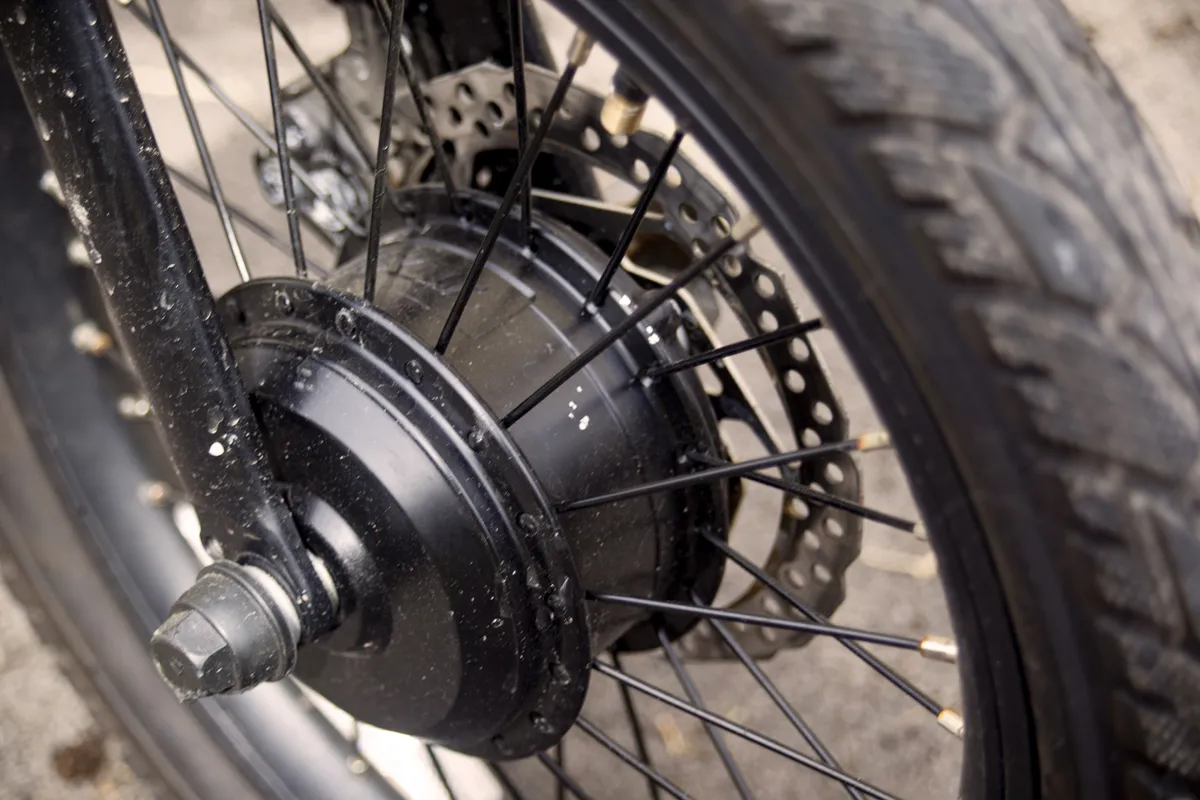
Front-hub motors tend to be the preserve of electric bikes designed for commuting, such as electric hybrids and electric folding bikes. They're also a common feature on cheap electric bikes.
Many electric bike conversion kits also use front-hub motors.
Mid-mounted motors

Mid-mounted motors sit in the area where the bottom bracket is usually found.
Mid-mounted motors are found across all different types of electric bikes. They work particularly well for electric mountain bikes because their weight is central and low, improving riding characteristics.
Rear-hub motors
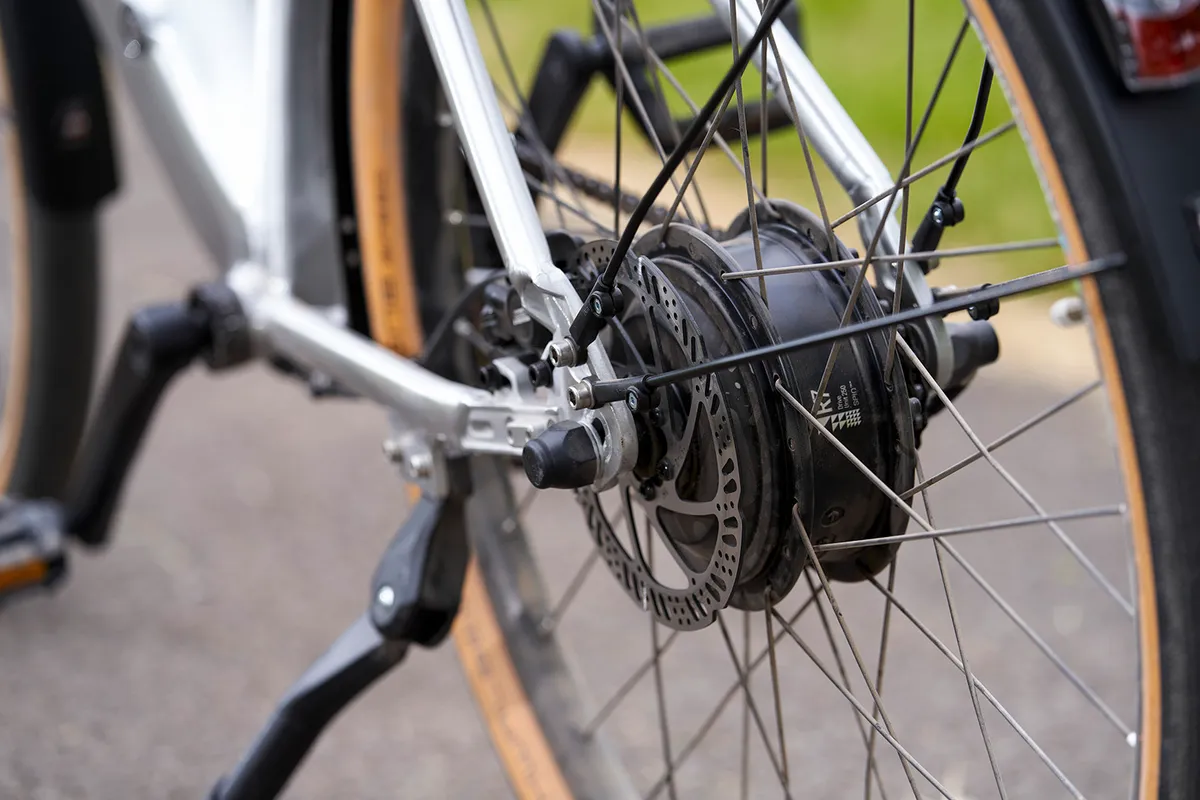
Rear-hub motors are usually found on hybrids and some of the best electric road bikes.
Rear-hub motors look very sleek and, at first glance, it's often hard to tell the bike they're fitted to is an electric bike.
Battery placement

Batteries, meanwhile, might be mounted on top of the down tube or along the front of the seat tube.
Internal batteries housed in the down tube, that are either removable or fixed in place, are also a popular option, particularly on mountain bikes.
Some hybrid ebikes often have the battery mounted under the luggage rack.
A removable ebike battery has the advantage that you can take it indoors to charge it, whereas you'll need an electrical socket close to your bike to charge it otherwise. On the other hand, a non-removable battery may look neater, is better protected and less prone to theft.
Electric bike motor power and torque explained

Electric bike motor power output is normally measured in watts.
Electric bike laws in most countries state a motor's continuous power output has to be limited to 250 watts. The majority of motors can put out over the 250 watts maximum power allowed, providing considerably higher peak power over short time periods.
A motor's maximum torque is the more important performance figure. The peak torque a motor is able to deliver also varies more between motor systems.
Denoted in Newton metres, or Nm, this measures how much turning force the motor gives out.
On an electric mountain bike, you’ll find situations where it’s important to have plenty of torque on hand to help you quickly get over obstacles and up steep gradients.
The best electric mountain bikes typically come with higher-spec motor systems with higher torque output, and the same is true of electric cargo bikes.
Electric gravel bikes or road bikes may not require as much oomph, or a manufacturer may choose to spec a less powerful motor to provide a more natural ride feel.
Assistance levels and displays

Electric bike motor systems typically come with a separate controller so you can set the assistance level you want. There are usually between three and five assistance levels, offering an increasing amount of power, as well as the option to pedal without assistance, useful if you're trying to get fit on your electric bike.
As you’d expect, the less assistance you dial in, the longer the ebike’s battery will last. It’s a good idea to dial it up when you hit obstacles such as a hill or for stop/start riding, and drop it down again when the terrain is easier.
Some systems have an option called ‘boost’ or ‘turbo’ mode. This gives you extra power above 250 watts to help with quick starts or steep climbs.
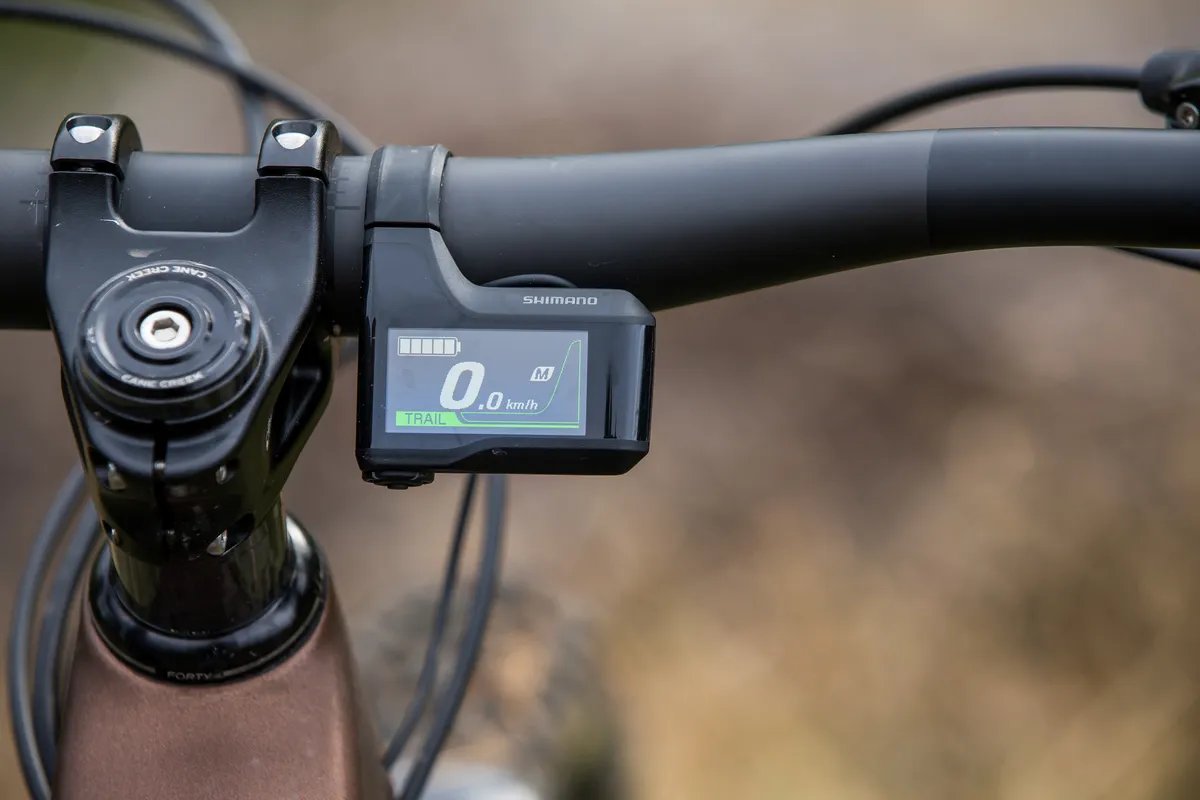
The controller usually sits on the bike’s handlebar, although some are set into the top tube. Designs vary from those that give you a screen with loads of stats, sometimes including navigation, through to a minimalist single button and LEDs to show battery and assistance levels.
Most electric bike motor systems come with an app, which you can use to monitor their status and battery life.
Some allow you to change settings such as the amount of assistance you get at each level, and some use your smartphone as the controller for the ebike. Many apps give you navigation, ride stats and other data too.
Mid-drive motor systems
The key electric motor brands using mid-drive motor placement are Bosch, Shimano Steps and Fazua. It’s an option chosen by other brands who produce their own motor systems, such as Giant and Specialized.
Bosch electric bike motors explained

Bosch has eight different variants of its mid-drive motor unit, with some having hub gear and derailleur gear variants.
Most are limited to 25kph (the legal limit for electric assistance in the UK, the EU and Australia). The Performance Line Speed motor is limited to 45kph for use in speed pedelec bikes.
All offer four levels of assistance, with the maximum torque on offer ranging from 40Nm for the Active Line units up to 85Nm for the Performance Line CX. Motor weights are between 2.9kg and 3.2kg.
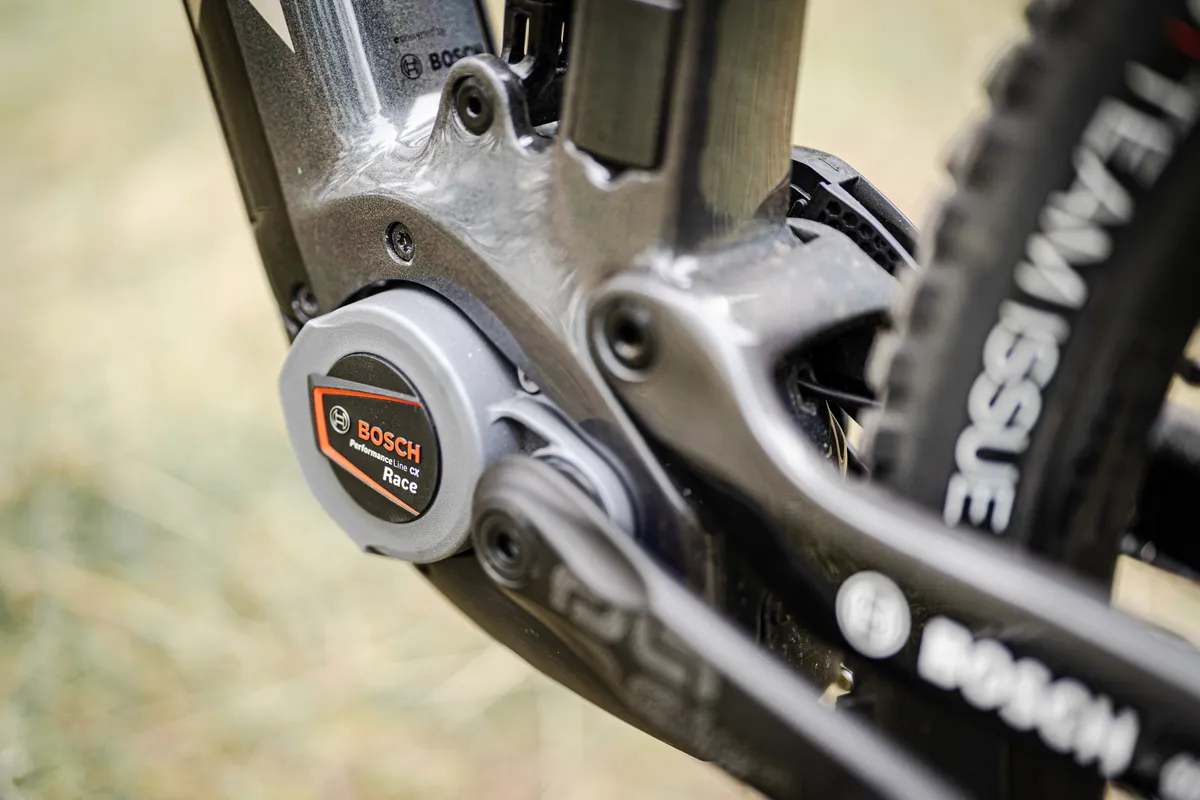
You’re more likely to see the Performance Line CX motors on electric mountain bikes and electric gravel bikes, which demand plenty of torque. Bosch Active Line motors are more commonly seen on electric hybrid bikes.
Bosch has packaged together its Performance Line CX motor, Flow app, remote control, Kiox 300 head unit and batteries with up to 725Wh capacity into what it calls its Smart System. This is designed to offer chronic tinkerers the greatest level of customisation possible.
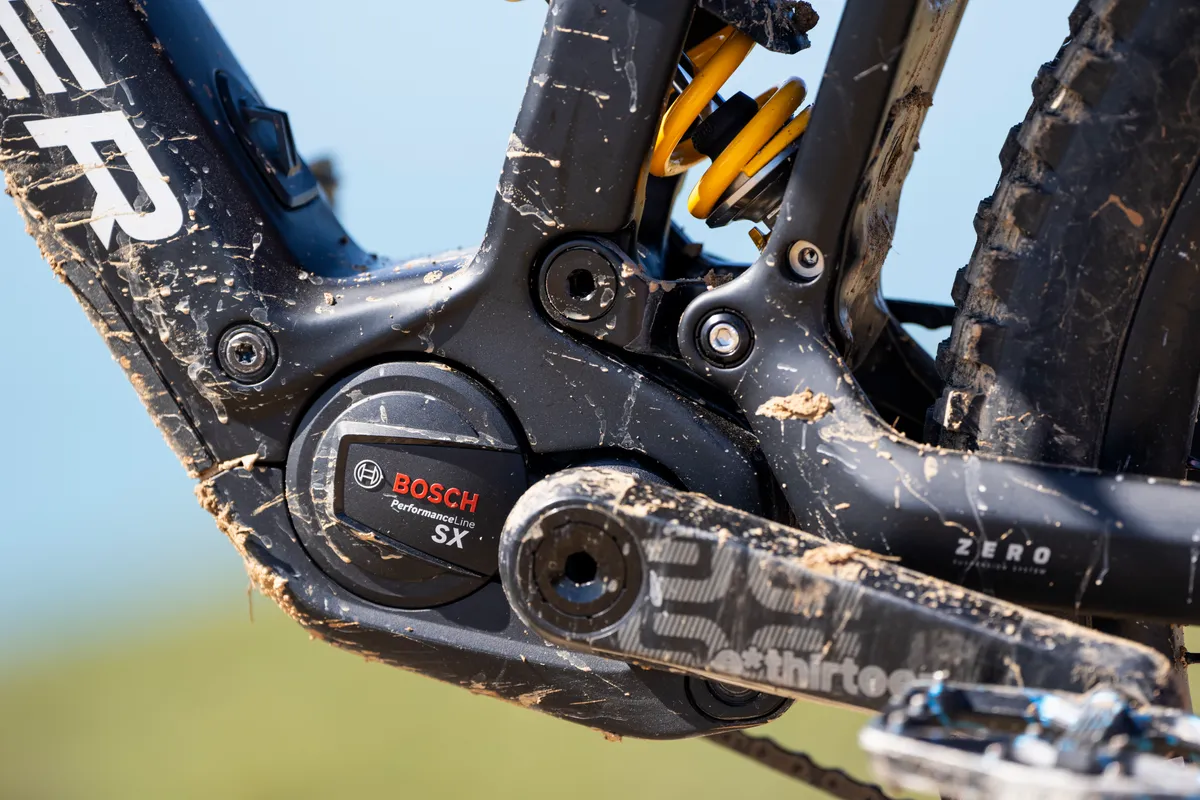
The German brand also has the Performance Line SX motor that sits in the mid-weight category and is aimed toward lightweight eMTBs and electric gravel bikes. The motor has a claimed weight of 2kg and can push out 600W of power, depending on your location, and 55Nm of torque.
Bosch’s PowerPack batteries are designed to be mounted on top of the bike’s down tube or under a rear rack. Bosch PowerTube batteries are housed inside the frame. There’s the option to add a second battery in some cases, to boost range.
The six controller options are designed to be mounted either on the bike’s handlebar or, in the case of the System Controller, integrated into the top tube and include LED displays. Three apps enable you to use your smartphone to control and monitor the motor.
You can find Bosch motors fitted to ebikes from many brands, including Cannondale, Canyon and Cube.
Bosch electric bike motor specs
| | Motor weight | Peak power | Peak torque |
|---|---|---|---|
| Bosch Performance Line CX | 2.9kg | 250 watts | 85Nm |
| Bosch Performance Line Speed | 2.9kg | 250 watts | 85Nm |
| Bosch Performance Line | 3.2kg | 250 watts | 75Nm |
| Bosch Cargo Line | 2.9kg | 250 watts | 85Nm |
| Bosch Active Line Plus | 3.2kg | 250 watts | 50Nm |
| Bosch Active Line | 2.9kg | 250 watts | 40Nm |
| Bosch Performance Line CX Race | 2.75kg | 250 watts | 85Nm |
| Bosch Performance Line SX | 2kg | 250 watts | 55Nm |
Bosch electric bike battery options
- Battery capacity: 300-725Wh
- Battery weight: 2.0-4.0kg
Shimano Steps electric bike motors explained

Shimano has targeted its Steps motor system at urban and eMTB riders, although it’s now expanding its support to e-road and e-gravel bikes too, offering integration with its Di2 electronic groupset shifters.
There are five motors available. The mountain bike-oriented E7000 and the latest EP6 and EP8 models come with 60Nm or 85Nm torque and a large-capacity battery of up to 630Wh. This can be mounted either externally on the down tube or within the frame.
The EP801 motor (more commonly known as EP8) replaced Shimano's original EP8000 motor. This matches the 85Nm torque output of Bosch’s highest-output Performance Line CX, while dropping the weight from the other MTB-oriented Steps motors.
The Q-factor (the distance between the pedals) is also narrower for better ergonomics. Maximum range has also been upped by 20 per cent.
Shimano says the new EP6 motor provides the output of the EP8 in a more affordable package. It's slightly heavier though. Both the EP6 and EP8 motors offer features such as automatic shifting when paired with an electronic groupset, and a system to allow shifting without needing to pedal.
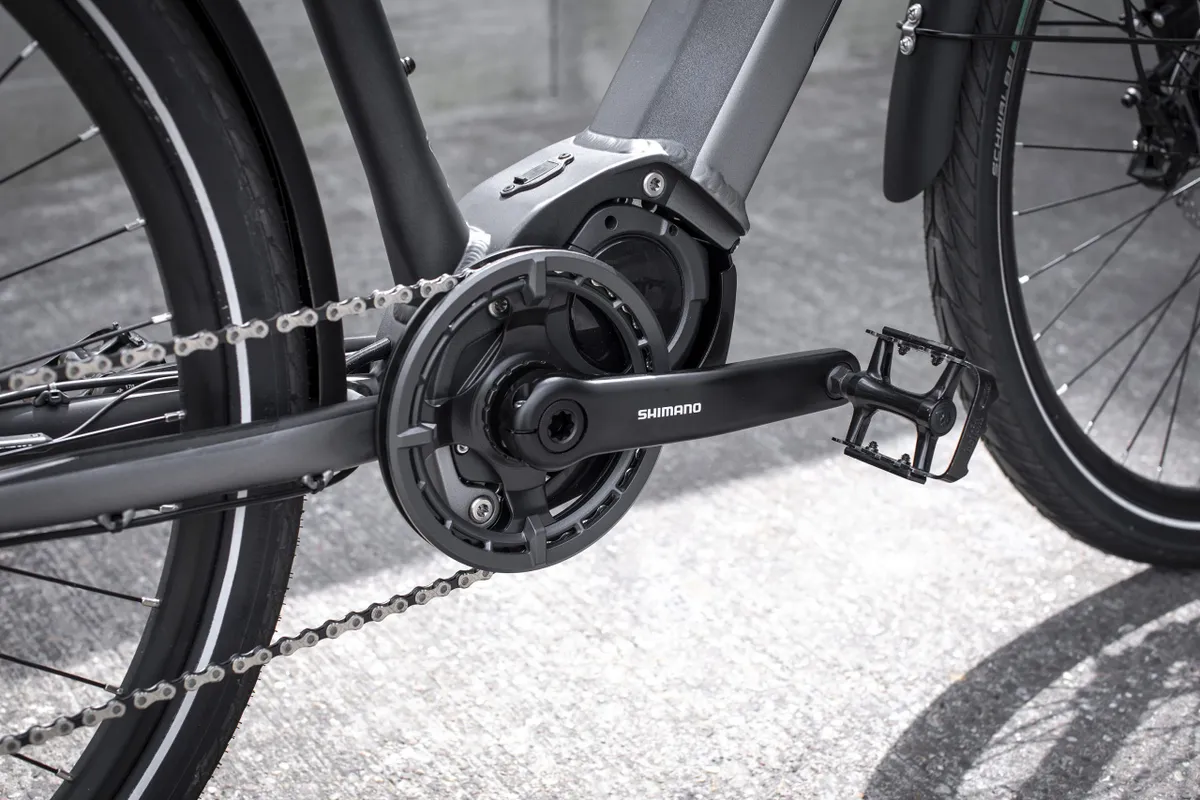
Meanwhile, the E6100 motor is aimed at hybrid ebikes. Weighing 2.8kg, it gives 60Nm torque and can offer automatic gear shifting when paired to a Di2 groupset. Like the MTB units, it can be powered by batteries with between 418Wh and 630Wh capacity. Thse can be mounted on a pannier rack, or on external or internal frame mounting.
The EP8 Cargo, EP6 Cargo and E6100 Cargo are – as the name suggests – designed for use on cargo bikes. These give higher torque from lower speeds compared to the standard units.
Shimano offers connectivity with third-party batteries for higher capacity heading up to 1,000Wh or more for electric cargo bike use.
Finally, the E5000 motor, with lower torque, is designed for use on electric hybrid bikes.
Shimano Steps motors specs
| | Motor weight | Peak power | Peak torque |
|---|---|---|---|
| Shimano Steps EP8 (EP801) | 2.7kg | 250 watts | 85Nm |
| Shimano Steps EP6 (EP600) | 3.0kg | 250 watts | 85Nm |
| Shimano Steps E7000 | 2.8kg | 250 watts | 60Nm |
| Shimano Steps E6100 | 2.8kg | 250 watts | 60Nm |
| Shimano Steps E5000 | 2.4kg | 250 watts | 40Nm |
Shimano Steps battery specs
- Battery capacity: 418-630Wh
- Battery weight: 2.6-3kg
Fazua electric bike motors explained
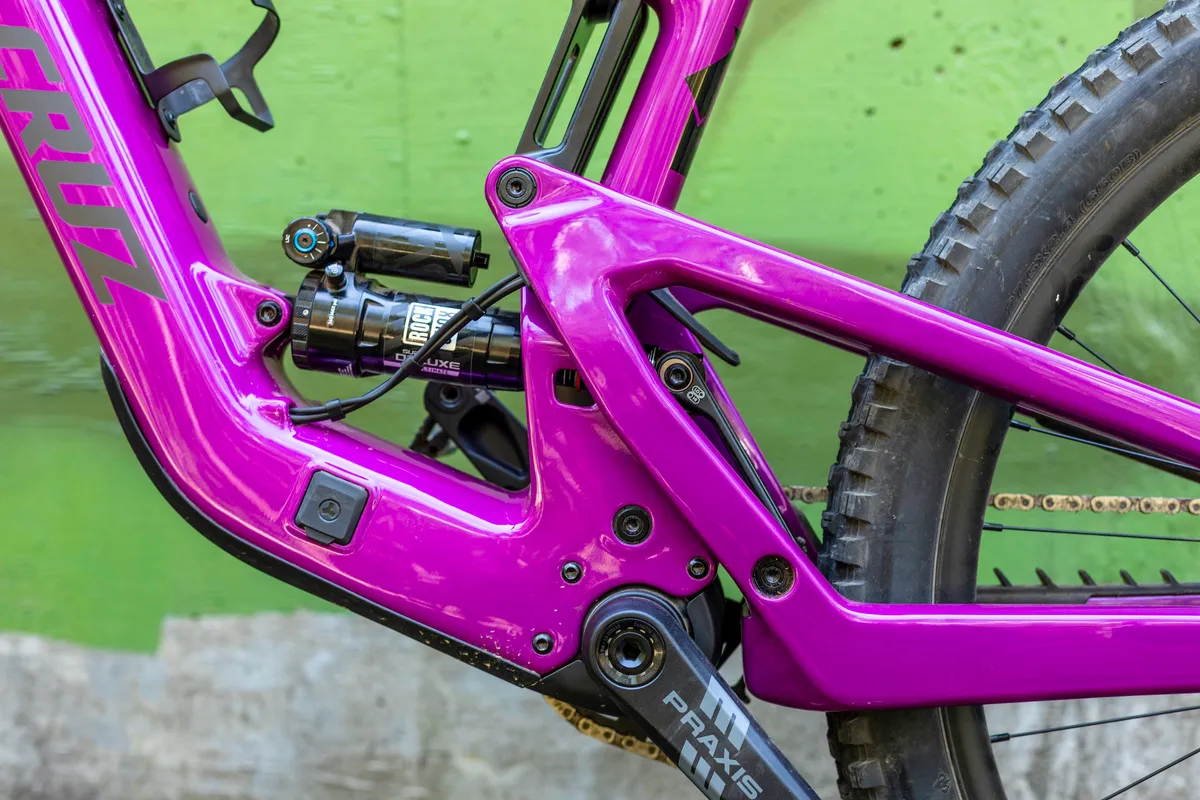
Fazua currently offers a range of three motors. The German brand's kit is used on several top-drawer bikes, from the likes of Pinarello, Look, Santa Cruz and Trek.
Their low weight, internal placement and small profile make them a popular choice for electric road bikes. The Fazua system’s progressive assistance is often cited as replicating the sensation of riding a non-assisted road bike. They can also be found on some hybrids and electric mountain bikes.
The motor sits at the bottom end of the down tube, with the battery housed further up the tube. Both are removable as a single unit in the original Evation and Ride 50, so you can potentially ride your ebike like a non-assisted bike too.
The motor supplies power via a proprietary bottom bracket that provides two-sided torque and cadence measurement.
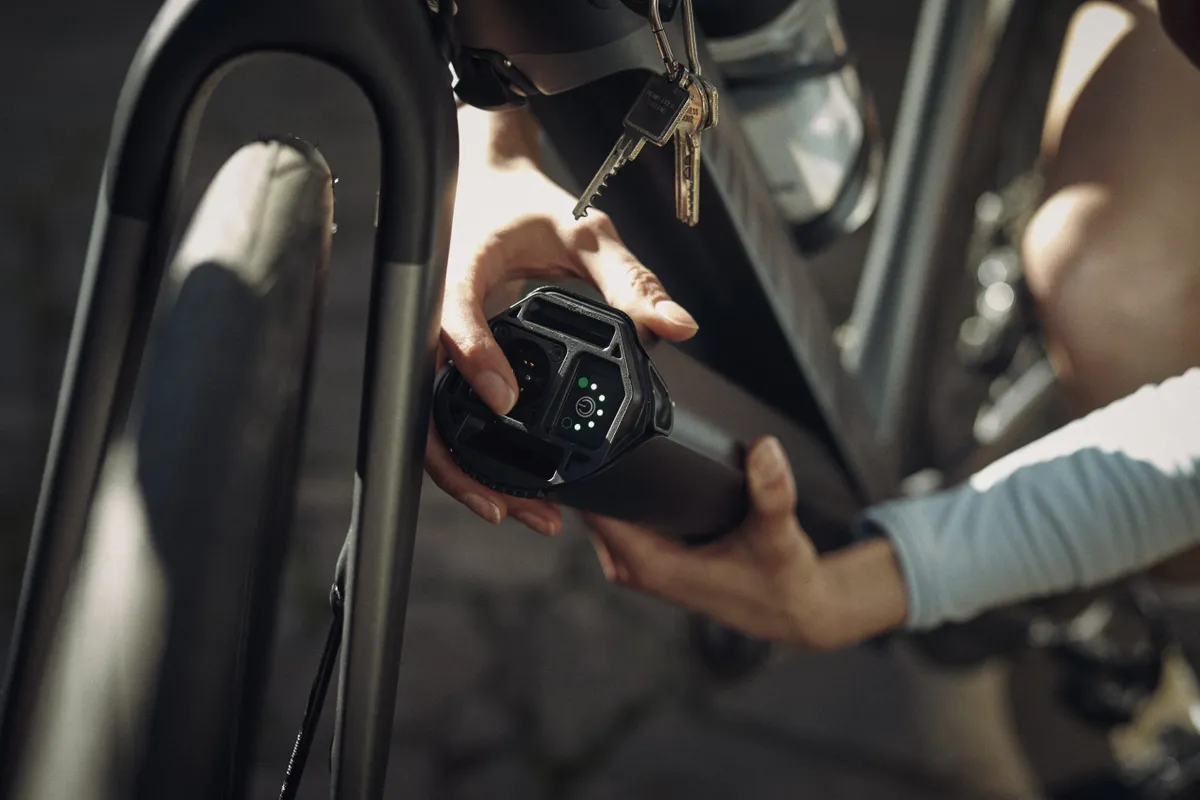
Fazua offers both bar-mounted and top-tube integrated controllers. There’s also a Boost button that lets the unit hit 450 watts while it’s held down.
Fazua's latest motor is the Ride 60. This offers 60Nm torque from a motor weighing 1.96kg paired with a 432Wh battery weighing 2.3kg.
Unlike the Evation and Ride 50, the bottom bracket and motor unit are a single piece, so there's no option to remove the motor.
The Fazua Ride 50 has 58Nm torque and the motor weighs 1.8kg. It's powered by a 252Wh battery weighing 1.4kg. There are two versions, the Trail and Street, which are tuned differently for the different needs in these two environments.
Finally, there's the original Fazua Evation motor and battery with 55Nm torque and weighing 4.6kg for the motor, battery and drive pack. We're likely to see this replaced over time by Fazua's newer units, because these have the same form factor but offer improved output characteristics.
Fazua specs
| | Motor weight | Peak power | Torque | Battery capacity | Battery weight |
|---|---|---|---|---|---|
| Ride 60 | 2.0kg | 450 watts | 60Nm | 430Wh | 2.3kg |
| Ride 50 Trail/Street | 1.8kg (plus 1.2kg for the bottom bracket) | 350 watts | 58Nm | 252Wh | 1.4kg |
| Evation | 1.9kg (plus 1.3kg for the bottom bracket) | 450 watts | 55Nm | 252Wh | 1.4kg |
Yamaha electric bike motors explained

Yamaha makes five different motor systems, with Giant and Haibike being the major users of its motors (though Giant rebrands the motors as its own).
Torque output ranges from 85Nm for its PW-X3 motor, which is geared towards eMTBs, through to 50Nm for the PWseries CE.
There’s also the 45kph PW-X2, which offers 500 watts maximum power.
Yamaha's electric bike motors are paired with a range of batteries with between 400Wh and 600Wh capacity. These can be mounted internally or externally.
There are three controller options with bar-mounted displays, two of which have a separate bar-mounted remote. This can be sited closer to the handlebar grips for ease of use when riding.
Yamaha electric bike motor specs
| | Motor weight | Peak power | Torque |
|---|---|---|---|
| Yamaha PW-X3 | 2.8kg | 250 watts | 85Nm |
| Yamaha PW-X2 45 | 3.1kg | 500 watts | 80Nm |
| Yamaha PWseries TE | 3.4kg | 250 watts | 60Nm |
| Yamaha PWseries CE | 3kg | 250 watts | 50Nm |
| PWseries S2 | 2.9kg | 250 watts | 75Nm |
| Yamaha PW-XM | 2.6kg | 250 watts | 85Nm |
Yamaha battery stats
- Battery capacity: 400-600Wh
- Battery weight: 2.8-3.8kg
Specialized electric bike motors explained
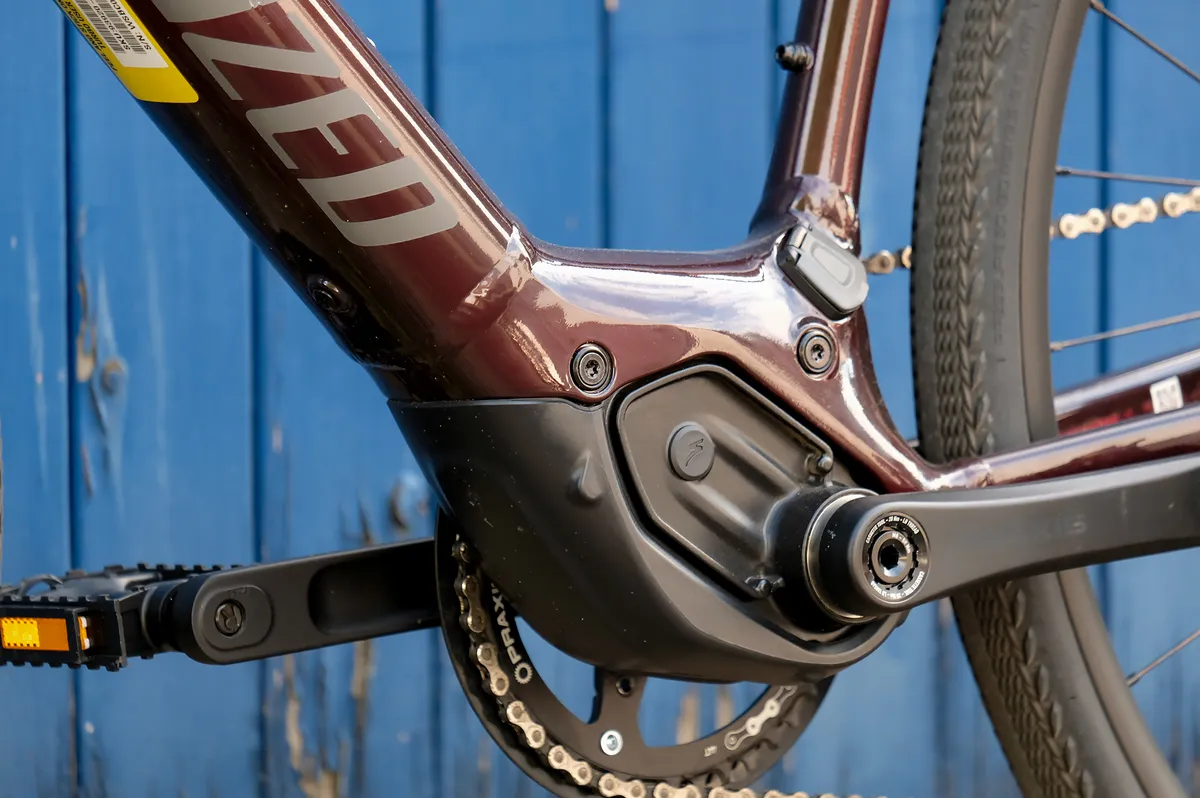
Specialized uses its own-brand motors in its ebikes. The motors are manufactured by German brand, Brose. They come in two flavours.
The more powerful range of motors is used in Specialized '4x You' ebikes.
The lighter-weight, less powerful motor is used in its Turbo SL ebikes, which Specialized calls 2x You to reflect the lower level of assistance on offer.
The lighter-weight SL 1,2 motor has a torque output of 35Nm and is powered by a 320Wh battery.
Specializes says the latest-generation, heavier-duty 2.2 motor is 15 per cent smaller and 11 per cent lighter than its predecessor. It can put out 565W peak power (250W continuously rated) and 90Nm peak torque. Specialized also uses the slightly less powerful 2.0 motor in some of its ebikes, including the Turbo Tero urban/mountain bike, which has 70Nm peak torque.
The more powerful models are paired with batteries between 500Wh and 710Wh. Quoted ranges are around 130km for hybrid and road bikes, and around five hours ride time for eMTBs. According to Specialized, the range of its e-road bikes can be extended up to 195km or more with its Range Extender, which sits in the bottle cage.
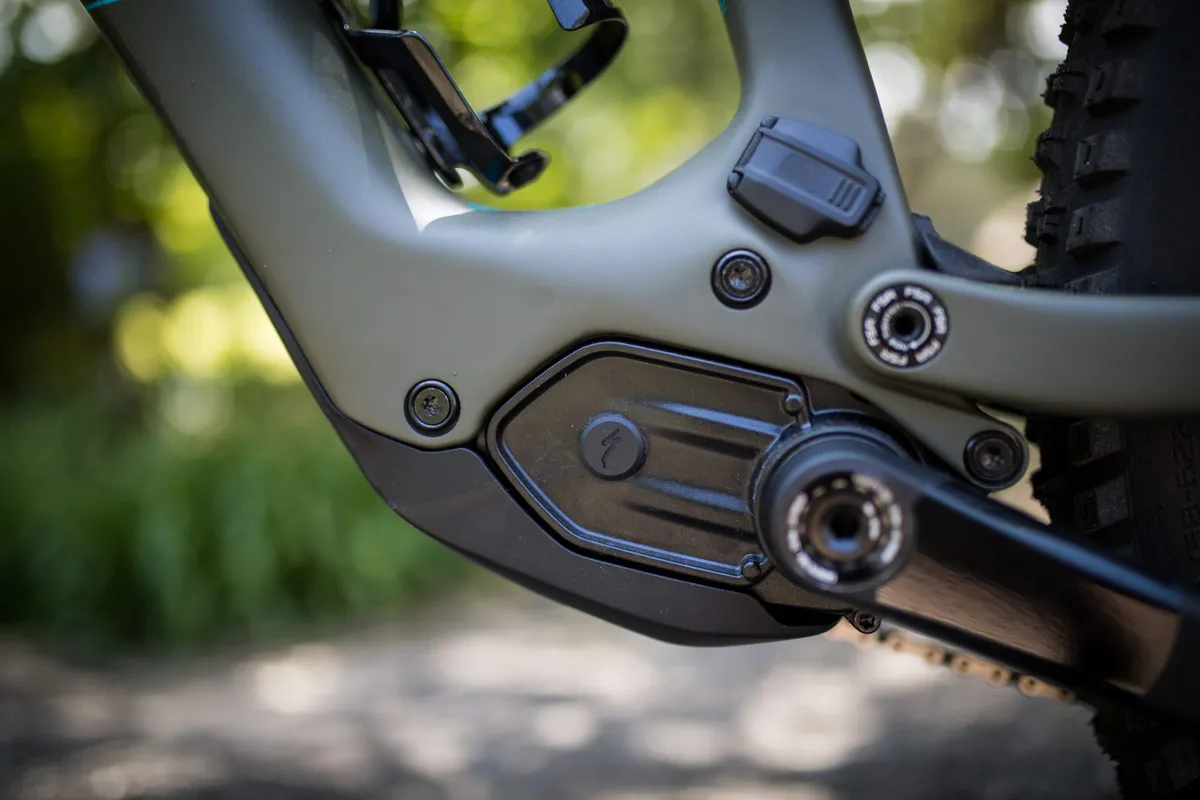
Specialized has its own displays too, along with Bluetooth and ANT+ connectivity for fine-tuning via the brand’s Mission Control smartphone app.
Specialized Turbo specs
| | Motor weight | Peak power | Torque | Battery capacity | Battery weight |
|---|---|---|---|---|---|
| Specialized Turbo 1.1 | 2.0kg | 240W | 35Nm | 320Wh (internal), 160Wh (Range Extender) | 1.8kg (internal), 1kg (range extender) |
| Specialized Turbo 2.0/2.2 | 3.4kg | 565W | 70/85Nm | 500 - 710Wh | 2.5-3.6kg |
SRAM electric bike motors explained

SRAM's Eagle Powertrain is a relatively new entrant to the world of electric bike motors.
The drive system itself is manufactured by the German brand Brose, similar to Specialized's motor, except the Eagle Powertrain has a few more connectivity features that link up to SRAM's wider Eagle AXS ecosystem.
The motor churns out 90Nm of torque and 680W of peak power, with the drive unit weighing in at 2.9kg.
Coast Shift enables you to change gear using your SRAM Eagle AXS Transmission without pedalling, so you can get into the correct gear before a climb or descent.
So far the motor has only been specced on electric mountain bikes.
An AXS Pod on the handlebar enables you to switch between two drive modes, Range mode and Rally mode, with the latter offering more performance at the sacrifice of overall range.
Unlike other brands, SRAM uses a top tube-mounted display, integrating all the electric gubbins into the frame.
SRAM Eagle Powertrain specs
TQ electric bike motors explained
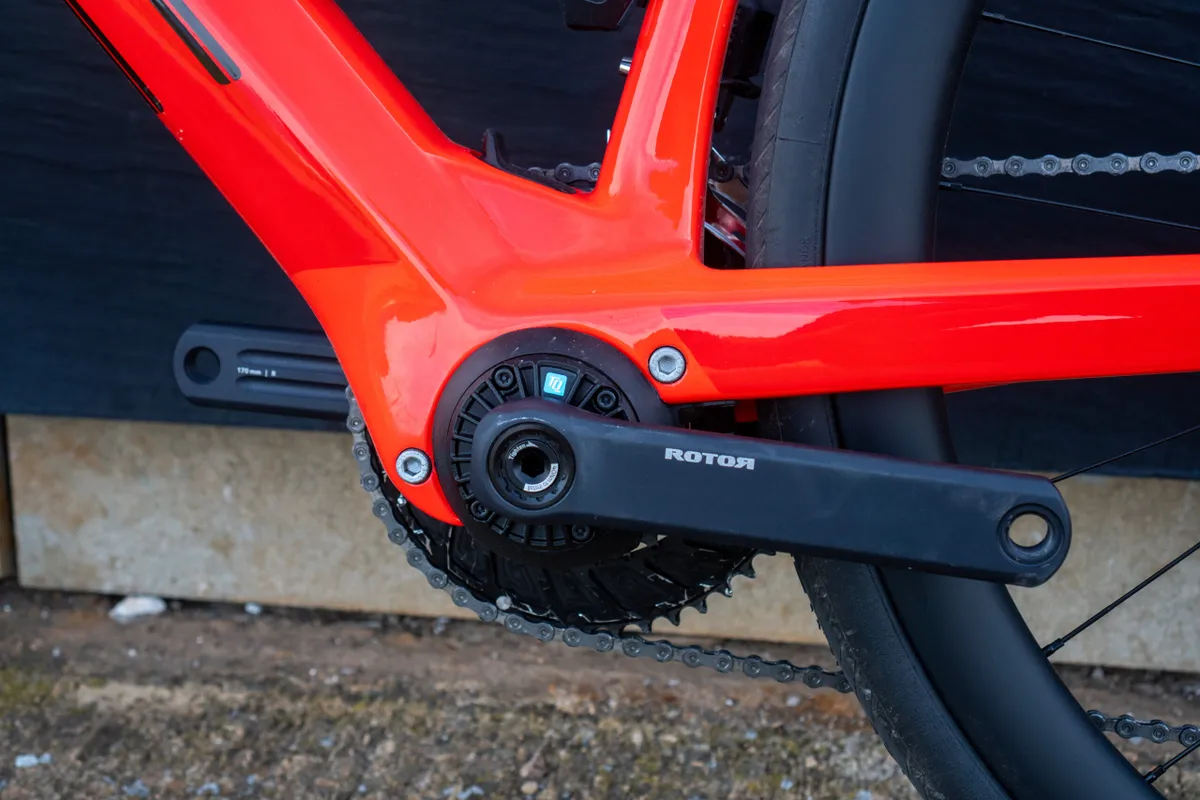
TQ is a new entrant in the electric bike motor game. Its background is in robotics and aerospace.
The motor system debuted on the Trek Fuel EXe trail mountain bike. This was followed by the Domane+ SLR and AL road bikes. It's also used by BMC on the Fourstroke AMP LT.
The TQ HPR50 motor uses a one-step direct drive speed reduction system rather than the more usual multi-stage gears or belts. TQ says this makes its motor lighter and quieter, and less prone to wear.

TQ quotes a motor weight of 1,850g, with a narrow 135mm bottom bracket width. Peak power is 300W and peak torque 50Nm. It's powered by a 360Wh battery weighing 1,950g for a total system weight of 3.9kg.
TQ has a control panel integrated into the top tube and you choose between the three assistance levels via small buttons mounted on the handlebars. As usual, there's a smartphone app, or you can use Trek's own Trek Central app to control its ebikes.
TQ HPR50 specs
| | Motor weight | Peak power | Torque | Battery capacity | Battery weight |
|---|---|---|---|---|---|
| TQ HPR50 | 1.85kg | 300W | 50Nm | 360Wh | 1.95kg |
Rear-hub motor systems
Positioning a motor in the rear hub works well on road and hybrid ebikes, where there’s not as much need to shift your weight around compared to riding an eMTB.
Because much of the rider’s weight sits over the rear wheel, there’s plenty of traction. Since the motor’s power isn’t going through the drivetrain, there’s also no extra wear and no need to beef it up to deal with the motor’s torque.
The Q-factor of some mid-mounted motors can be quite wide (although motor makers have worked to reduce it to normal bike measures), so drivetrain alignment and rider fit can be an issue too. Placing the motor inside the hub gets around this issue because they work with standard cranksets.
Mahle ebikemotion motors explained
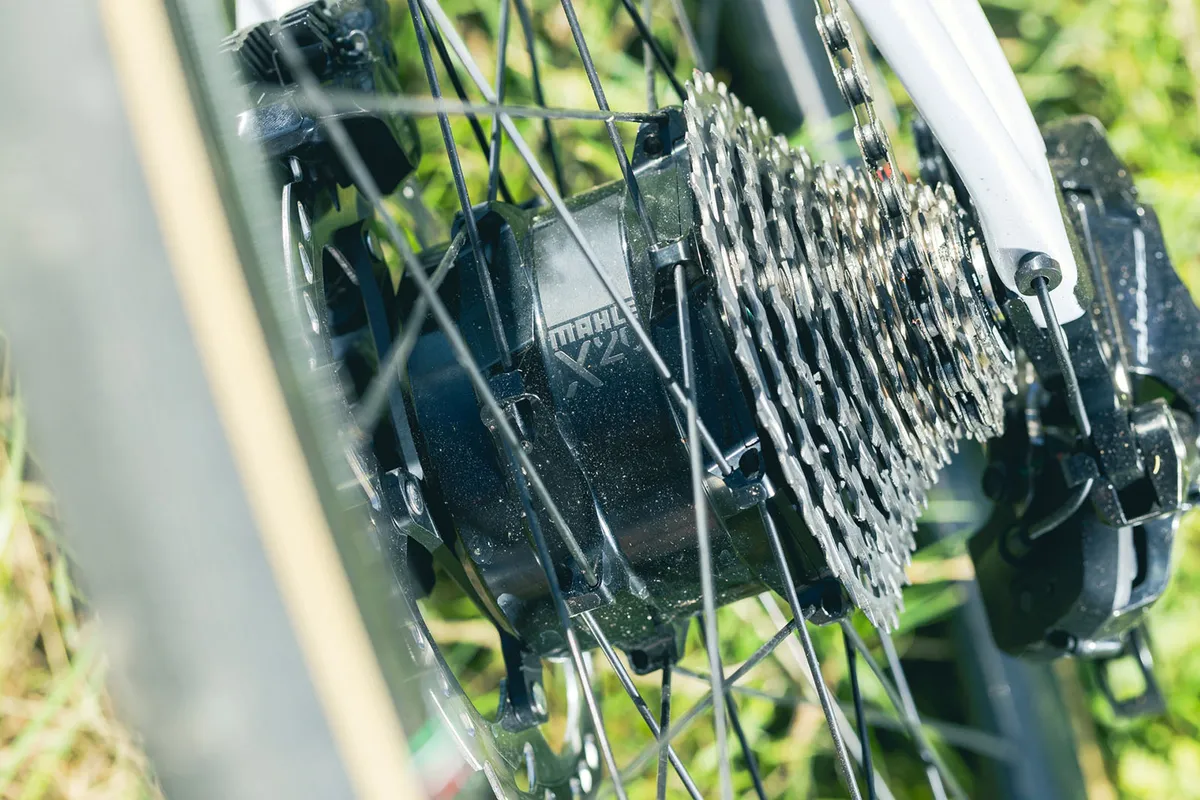
The Mahle ebikemotion system has a rear-hub motor, powered by an internal battery in the down tube.
Mahle now has two ebikemotion rear-hub motors – the original X35 and the newer, more compact X20.
The original X35 motor has 40Nm power output, while the X20 ups that to 55Nm. Both systems have batteries of around 250Wh, while the X20 also has a 350Wh option.
The total system weight for the X20 is claimed to be 3.2kg. The X35 comes in at a claimed weight of 3.5kg. This low weight sees it specced on some of the lightest ebikes on the market.
Mahle's latest X30 model sits between the X20 and X35, delivering 45Nm of torque and 250W of peak power.
Its compact size makes for a bike profile that’s not that different from a regular pedal-powered bike. There’s the option to add a bottle cage battery to double the range.
There are quite a few bike brands using the Mahle ebikemotion rear-hub motor in their road bikes, including Orbea, Wilier, Colnago and Ribble. It’s also used on hybrids such as the Cannondale Quick Neo, Lapierre E-Sensium and Wilier Urta Hybrid mountain bike.
The iWoc controller options from the brand include a low-profile button mounted on the top tube, as well as bar-mounted units. There's BLE and ANT+ connectivity and an app that enables you to tune the motor, and has an option to control output based on your heart rate.
Mahle ebikemotion specs
| | Motor weight | Peak power | Torque | Battery capacity | Battery weight |
|---|---|---|---|---|---|
| Mahle ebikemotion X20 | 1.4kg | 250 watts | 55Nm | 250Wh/350Wh | 1.8kg |
| Mahle ebikemotion X35 | 1.5kg | 250 watts | 40Nm | 250Wh | 2.0kg |
| Mahle ebikemotion X30 | 1.9 kg | 250 watts | 45Nm | 236Wh/350 Wh | 1.6kg |

